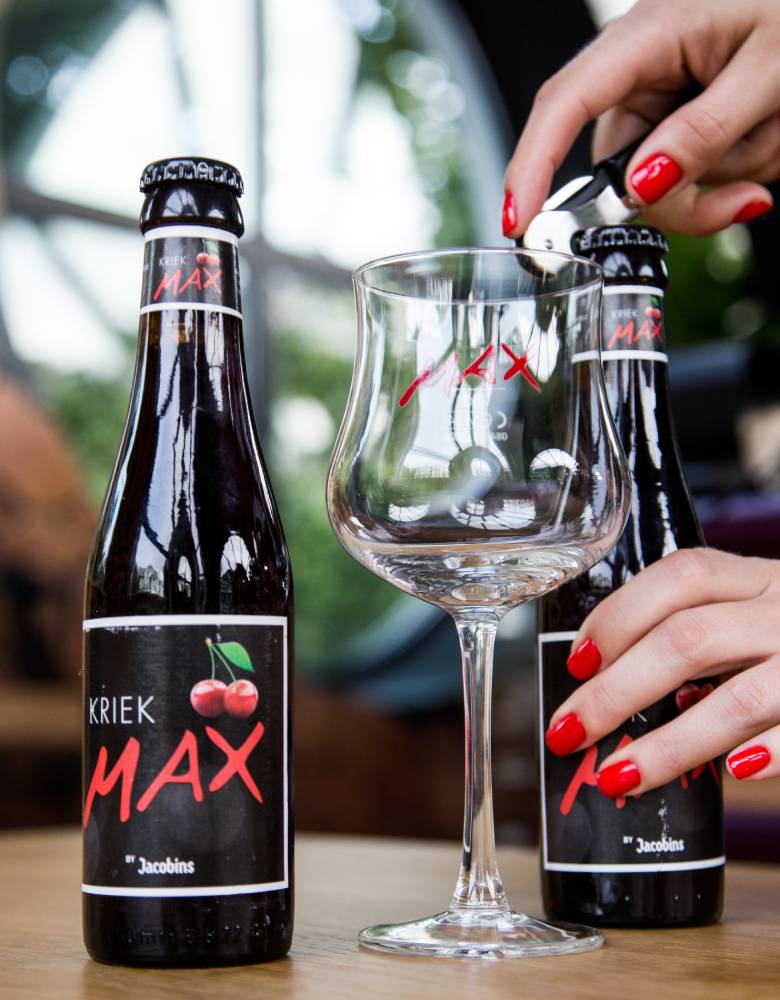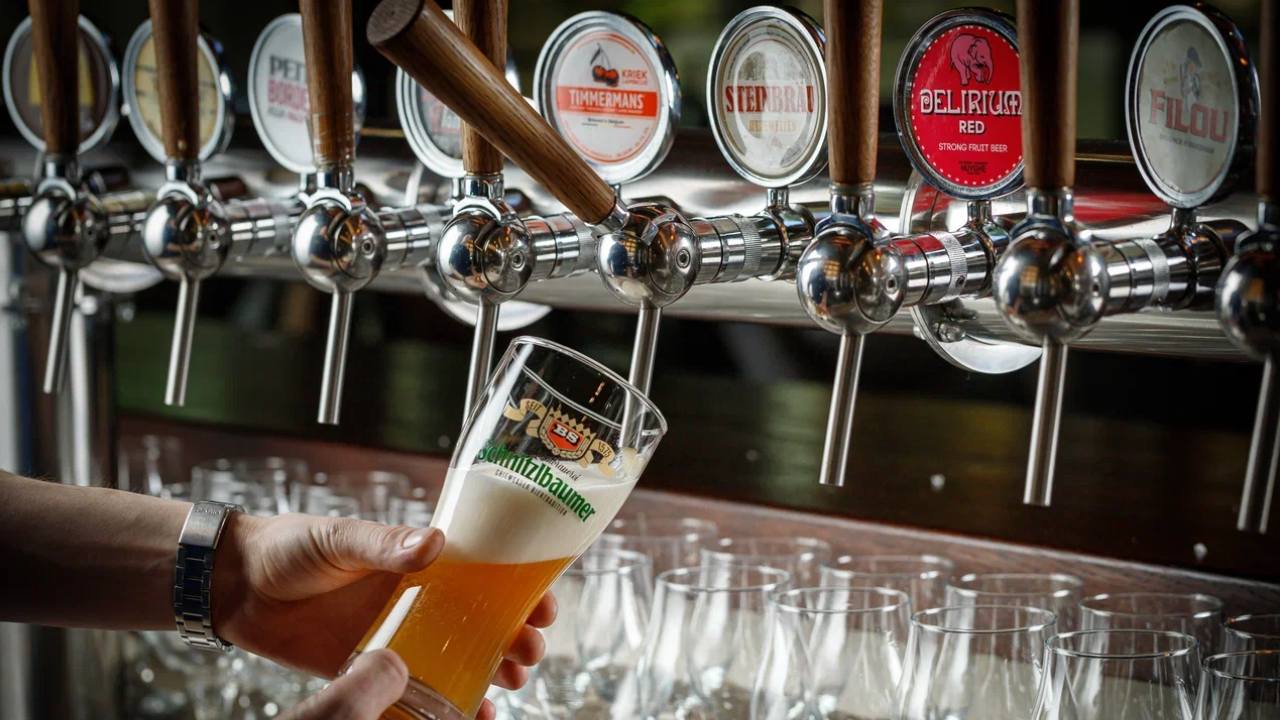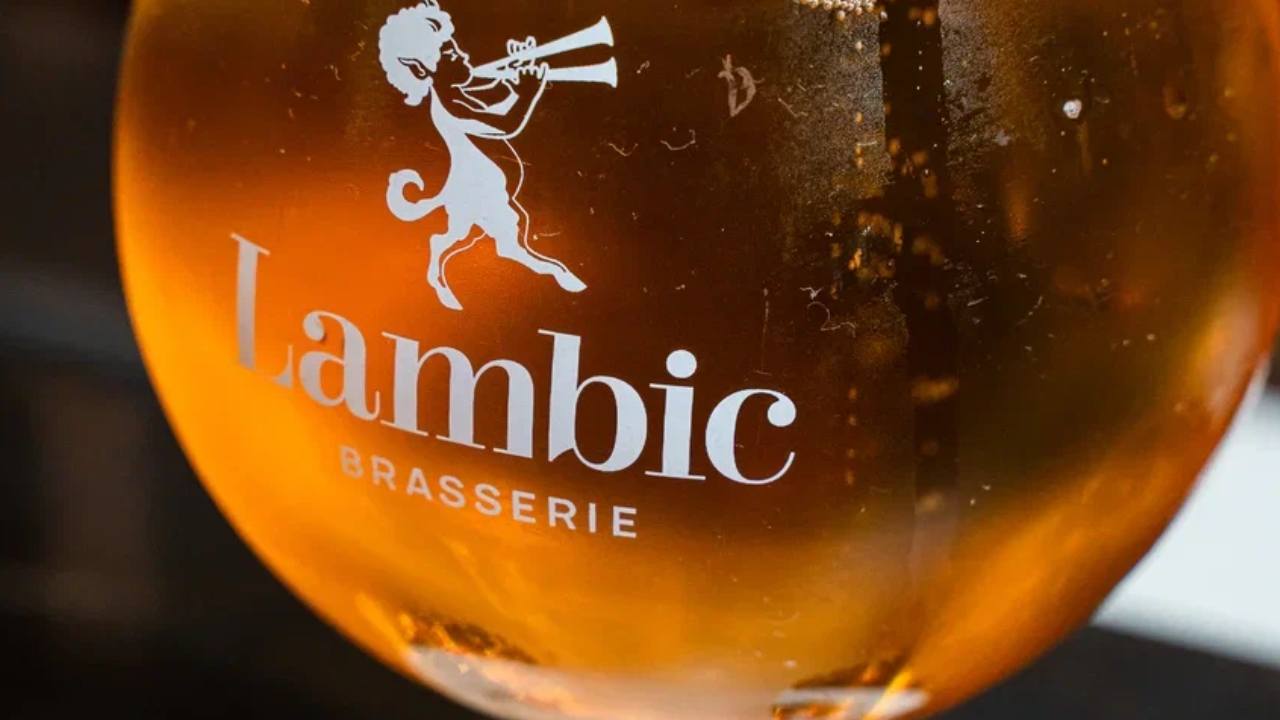Belgian Kriek-style beer: more than just a cherry

Cherry beer has long occupied a separate niche among foamy beverages - the taste of this berry is so harmoniously blended into the bouquet that the trend has its own connoisseurs. And the most popular among the cherry brews is Kriek - a traditional Belgian beer of bright ruby color, which has a unique taste and rich aroma. But why is it so beloved by beer fans?
From history
Kriek is not even a variety, but a separate style. It is based on lambic, a beer made by spontaneous fermentation and only in Belgium. The wort is left in open vats, where "wild" yeasts - microorganisms that are found only in the valley of the river Senna - get in from the air. Because the spontaneous fermentation process is completely uncontrollable, each batch of lambic has a unique flavor, which is why beer connoisseurs love it.
Kriek differs from ordinary lambic by adding cherry juice or whole berries with pips before filtration. The mixture is not fermented, but kept for at least six months, until the beer reaches the right consistency.
The first such drink was brewed many years ago in Scharbeck brewery - local craftsmen decided to add to the product the fruit of sour cherries, which grew near the production site. And they were right: the taste of the berry turned out to be just right, and the drink itself acquired a beautiful ruby color as well.
And today?
These days, brewers don't rely on fate - the cherries for Kriek beer are grown on purpose. Most of the time they are Morello, ideally from the Brussels area. The result is a rather sour and tart beer with a rich, velvety flavor. For those who like it sweeter, producers offer a cherry-based kriek of sweet varieties, but do not immediately take the path of least resistance - you should first try to make friends with the original drink.
Belgian Kriek cherry beer has a lot to love: despite the moderate strength of 5-6%, it is a great warming in the cold. And it is also extremely pleasant to drink: in addition to cherries, you can feel the nutty tones and light floral notes in the taste. And, of course, there is nothing without the traditional flavor characteristics of lambic - old leather, wet earth and horse blanket.
The Belgian Kriek cherry beer should be consumed correctly - chilled to +8 degrees, from tall glasses or standard-sized hollow glasses. And ideally, do not snack: this way the taste of cherry lambic opens up even better.
If you can't taste Kriek in Belgium, come to a beer restaurant that honors the traditions of the country. Like any of the Lambic Brasserie - they serve cherry beers in style!

Coffee and beer - a match or a flop? Exploring the myths about the famous combination
Coffee and beer are drunk at different times and on different occasions, but they have much more in common than meets the eye. Beverages that were considered ordinary 10 years ago have now become gourmet products: craft beer and specialty coffee have won millions of fans. But what if you mix the two? Let’s find out how justified this combination is and what myths are associated with it. How did the combination of coffee and beer appear? Experiments with coffee and beer began in the middle of the XX century, when brewers and bartenders began to look for new flavors. But the real boom happened in the nineties and noughties due to the growing popularity of craft beer. The first successful variants were coffee stouts and porters — dark brews with deep flavors that perfectly complemented the coffee notes. Brewers added coffee at various stages: — during brewing — for a rich flavor;— during fermentation — for softness;— into the finished beer — as a cold coffee infusion. A good example of such a recipe is the Japanese beer Hitachino Nest Espresso Stout, which can be tasted in Lambic beer restaurants. It’s a flavorful, dense ale brewed in the style of American imperial stouts with coffee beans added for espresso. Bartenders, too, have contributed to popularizing this unusual combination, creating original cocktails from coffee and beer. The most popular is the Black & Tan, which includes stout, lager and espresso. Today, such mixes are part of the craft culture. Is it true that coffee helps sober you up? One of the main myths is that coffee supposedly neutralizes alcohol. In fact, caffeine only masks intoxication. It creates the illusion of liveliness, but coffee does not actually lower blood alcohol levels. In addition, a cocktail of coffee and beer can increase the strain on the heart. If you drink coffee before alcohol, it will temporarily increase the activity of liver enzymes that break down ethanol. But this does not mean that it is necessary to increase the dose. Coffee with beer: harm or benefit? In moderate quantities, low-alcohol coffee beers (for example, stouts with 4-6% strength) are relatively safe. If you want to try such a mix, choose drinks from quality ingredients. For example: — Dark beer (porter, stout) and cold espresso.— Lager or ale and light coffee syrup. There are contraindications for such cocktails. Mixing coffee with beer is not recommended for people with hypertension, heart and GI diseases, as well as those who use drugs incompatible with caffeine. The combination of coffee and beer is an interesting gastronomic experience, especially if you respect the measure. Come to Lambic — we will treat you to interesting drinks without harming your health!
20 May 2025

Bitter! Let's understand what IBU is and how bitterness affects the taste of beer
If you’ve scrutinized craft beer labels, you’ve definitely seen the mysterious IBU abbreviation on them. This indicator plays a key role in shaping the flavor of the beverage. Let’s find out what it means and why bitterness is one of the main criteria for evaluating beer. What is IBU? IBU (International Bitterness Unit) is an international indicator of beer bitterness. It indicates the concentration of isohumulone, an alpha acid found in hops, which gives the drink its characteristic bitterness. The higher the IBU, the more bitter the beer will be. However, the perception of bitterness depends not only on this indicator, but also on the balance with malt sweetness, strength and aromatic additives. Why do you need the IBU index? Before the advent of industrial brewing, a beverage could be either too sweet or, conversely, too sour or bitter. To achieve a harmonious flavor, brewers began to adjust bitterness with hops. In the past, herbs (thistle, mint, juniper) were used to soften sweetness, but today the main source of bitterness is hops. It is added at different stages of brewing to: — compensate for the sweetness of the malt;— add complexity and flavor to the beer;— increase shelf life (isohumulone has antibacterial properties). The first to calculate the bitterness of beer were the people of Great Britain, using the formula «pounds of hops per quart of malt». The modern IBU standard was developed to accurately categorize beers. How to calculate IBU? The bitterness index is determined using a mathematical formula: G = D × E D = (A × B) / (C × 0.1) Where: A — mass of hops (in grams); B — alpha acid content of hops (%); C — wort volume (in liters); E — loss factor (production time and beer density are affected); G — final IBU. The longer the hops are brewed, the more alpha acids pass into the wort, increasing bitterness. IBU scale: from lager to IPA Beer bitterness is measured on a scale of 0 to 120+ IBUs, but most beers are in the 5-90 range. Beer Style IBU Level Characteristics Pale Lagers 8–15 Light, smooth, minimal bitterness Wheat Ales 10–20 Fruity notes, low bitterness Porters/Stouts 30–50 Coffee, chocolate tones, moderate bitterness American IPA 50–80 Strong hop bitterness, citrus and pine notes Imperial IPA 80–120+ Extreme bitterness, high alcohol content Why is IBU not the main selection criterion? A high IBU does not always mean that the beer will seem too bitter. For example, sweet stouts (30-50 IBU) seem less bitter than IPAs due to caramel and chocolate notes. And light lagers (8-15 IBU) may be perceived as more bitter due to a lack of malt balance. How do you choose a beer based on bitterness level? If you don’t like bitterness — choose lagers, wheat ales, Belgian trippels (up to 30 IBU). If you like balance, try porters or amber ales (30-50 IBU). If you like a rich hop bitterness, an IPA or Imperial Stout (50+ IBU) is ideal. You can try any of these varieties in Lambic beer restaurants. Come — we will find something to surprise you!
20 May 2025
